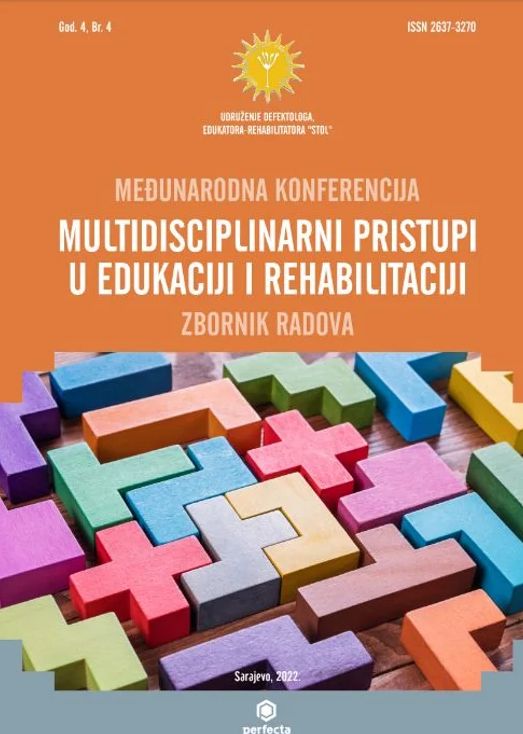HALLIWICK KONCEPTA PLIVANJA ZA DJECU SA DOWN SYNDROMOM TEORIJSKI I PRAKTIČNI ASPEKTI
HALLIWICK SWIMMING CONCEPT FOR CHILDREN WITH DOWN SYNDROME THEORETICAL AND PRACTICAL ASPECTS
Author(s): Aldvin Torlaković, Lejla ŠebićSubject(s): Social Sciences, Education, Sports Studies, Inclusive Education / Inclusion
Published by: Udruženje defektologa, edukatora-rehabilitatora (STOL)
Keywords: Down Syndrom; swimming; Halliwick method;
Summary/Abstract: Learning to swim is a specific work model in the teaching of physical education, which is especially true for children who have certain difficulties in psychomotor development. Experience has shown that children with Down Syndrome can be involved in this type of movement education, of course with adapted dynamics and methodology of learning basic movement activities in the water. One of the methods is the Halliwick concept of learning the basic elements of movement in water for people with disabilities (McMillan, 1997 - revised 2010). This method involves mental and physical adaptation to being in the water, relaxation, control of breathing, balance and ultimately independent movement in the water. The aim of this paper was to analyze the effectiveness of the Halliwick concept of training in swimming motor skills in water for children with Down Syndrome.The study was conducted on a sample of 10 subjects (5 girls and 5 boys), aged 9 ± 0.5years (children with Down Syndrome). The swimming program (Halliwick) lasted 12weeks (60 minutes per week). A set of 8 tests was used in the study to assess the level of mobility in water. T-test for dependent samples was used to analyze the results of initial and final testing. The results of the t-test indicate that after the implementation of the program there were statistically significant changes in all applied variables: SUV - independent entry into the water (p <.001); GRO- diving under water (p <.002); TRO - transverse rotation(p <.001); LRO - longitudinal rotation (p <.002); SLO - sagittal rotation (p <.001); PNS- floating on the abdomen (p <.002); SNG - jump into the water on his feet (p <.001); SKKV - independent movement on the water surface (p <.003). Based on the comparison of the results of the initial and final testing of the respondents, it is evident that the applied swimming model proved to be effective for all participants in the program. This confirms the allegations of similar research and concludes that the basic orientation of educational procedures in this area is changes in various characteristics of psychosomatic status, especially morphological, functional and motor abilities and traits and cognitive and conative functions involved in motor expression (Selimović et al. 2013). Based on the obtained research results,it can be concluded that the Halliwick model of swimming learning for children with Down Syndrome is very effective. Accordingly, there is a need for additional education of swimming coaches and physical education teachers for such and similar programs that are adapted to work with children who have certain difficulties in psychomotor development.
Journal: Multidisciplinarni Pristupi u Edukaciji i Rehabilitaciji
- Issue Year: 4/2022
- Issue No: 4
- Page Range: 109-118
- Page Count: 10
- Language: Bosnian, Croatian, Serbian

